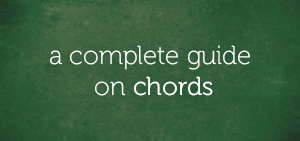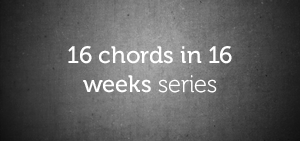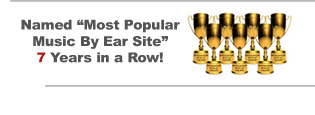Chords & Enhancements
>NOTE: To learn ALL the chord techniques and chord strategies to take your playing to the next level, go here:
https://www.hearandplay.com/products
Several months back, I tried out a new format where I took really good questions from students and not only answered them personally but sent the answers to our entire mailing list.
And you really seemed to enjoy that. But due to a busy production season (which I’ll tell you about very soon), I haven’t sent out any in a while.
Today, I’m back.
Not only with these helpful “Question & Answer” articles but with consistent blog updates as well. So stay tuned!
(If you have a question you’d like to see me answer in this format, visit https://www.hearandplay.com/askjermaine…)
—————-
*** Comment From Jamal Howard ***
Jermaine, I have been with you since 2004 and I give you the credit for getting me started. Now, I play for 2 churches and started a singing group a couple years ago that is really blessing our area.
My question is on easy ways to enhance my chords. Everyone tells me I sound good but I’m always hungry for more tips. Anything you can pass my way will be appreciated.
Keep up the great work my brother. You are an inspiration to many. Thank you.
—————-
>>> My comments and explanations to Jamal
Hey Jamal,
First off, thanks so much for your dedication! Wow, 2004! That’s a long time ago in internet years.
I’m glad to hear it paid off for you too. Playing for one church these days is enough but you’re playing for TWO. Keep it up!
Your question is, no doubt, a great one and I get asked this all the time.
There are many ways to approach enhancing and altering your chords.
Here’s a short list:
1) Inversions
2) Chord Additions
3) Chord Omissions
4) Chord Suspensions
5) Chord Arpeggios
6) Chord Extensions
7) Chord Reaches
8) Chord Dissonance
9) Chord Substitutions
10) Polychord voicings
11) Grace notes
Many of these chord concepts are covered in GospelKeys 202 and Urban Pro 600 in full detail, but I’ll cover them here and in my next e-mail.
CHORD INVERSIONS:
=============
You’d be surprised how far mastering inversions will take you.
In fact, many musicians don’t pay attention to inversions.
They learn their major, minor, diminished, and augmented chords (what I call the “Fantastic Four” in my Monthly Music Mentor series) and never look back.
And sure, these 4 chord types can take you a long way but what separates a GREAT musician from a good one is ones attention to details.
The melody will often times determine what inversion of a chord you play. I say “often times” because this isn’t the case all the time… but usually.
If you don’t know what an inversion is, here’s my simple definition.
“INVERSIONS are just different ways to play the same chord.”
Basically, every note gets its turn on the bottom. If you remember that, you’ll never forget how inversions work.
If I had 4 odd numbers:
1 3 5 7
And you had to rearrange these numbers in as many different ways as possible with each one getting its turn in the front, it would look like this:
1 3 5 7
3 5 7 1
5 7 1 3
7 1 3 5
Now, imagine these numbers are notes like:
C E G B
E G B C
G B C E
B C E G
There you have it! You’ve mastered the “inversions” game.
So when you’re playing a particular chord and you think it can sound better, the first thing to do is try different inversions.
After hitting a chord, you can even follow up with other inversions of the same chord up your piano.
Hands down, it’s the easiest, lowest hanging fruit for enhancing your sound.
ADDITIONS
============
The second thing you can do is add single tones to your chords.
When playing major and minor chords, the easiest thing you can do is add the “9th” tone to your chord.
“9” sounds all fancy doesn’t it?
Don’t sweat it because it’s basically the same thing as the 2nd tone of your scale.
If you’re in the key of C major, here’s the scale:
C D E F G A B C
1 2 3 4 5 6 7
Now, imagine we kept going and we never stopped counting:
C D E F G A B C D E F G A B C
1 2 3 4 5 6 7 8 9 10 11 12 13 14
What tone is the 9th?
It’s “D” right?
“D” also happens to be the 2nd tone of the scale too.
Now technically, you can reserve “9” for times when you’re really going to add the “high D” from the next octave and “2” for the instances where you use the low “D.”
But to be honest, this is “playing by ear” and it really doesn’t matter how you look at it. As long as you arrive at “D” for this C major or C minor chord, you’re fine.
High D, low D… they both will enhance your chord and you can choose the one you like for the situation at hand.
So instead of boring C major and C minor chords like this:
C E G
C Eb G
You’ll play:
C D E G
C D Eb G
OR
C E G D
C Eb G D
But I prefer the first version where the notes are closer.
Another tone that works well in these situations is the “6th tone” (or “13th,” as described above).
I like adding this tone when I’m already playing a 7th chord.
So if you’re playing a C major 7 chord:
C E G B
Adding the “6th” tone, “A” works well in most instances.
C E G A B
“Additions” don’t always have to be new notes. You can double up on existing notes.
Usually the “3rd” tone of the scale is a great note to double up on.
For example, in the last chord, you could double up on the “E.”
C E G A B
becomes:
C E G A B E
Because this is 6 notes, you simply play the C on your left hand and the “E G A B E” on your right.
C on left /// E G A B E
“Additions” are a great way to enhance your chords.
OMISSIONS
==========
Opposite of additions, sometimes less is more.
For example, the chord above:
C on left /// E G A B E
I’d probably take out the “G” which is the “5th” of the chord.
Usually, if there’s something to take out, it’s the “1” or the “5” of the chord.
Let me explain:
First, you need to know your numbers for the key you’re in.
In our case, C major:
C D E F G A B C
1 2 3 4 5 6 7
So when I say the “5” or the “1” or the “6” or the “7,” I’m referring to the tones of the scale, as shown above.
I’m NOT talking about the order of the chord as in the “3rd” note that’s played. It all relates back to the scale. Just thought I’d clarify that.
The reason you can take out the 5th is because it’s present in both major, minor, and dominant chords. Taking it out doesn’t alter these chords whatsoever.
On the other hand, you don’t want to mess with the “3rd” or “7th” tones of a chord because they are critical. They determine what type of chord you’re playing usually.
But unless the chord is diminished or augmented (which, in those cases, the 5th is either lowered a half step or raised a half step), you can take out the 5th because it’s just there for support.
For power, some people prefer to play it on their left hand and leave it out of their right hand. Some people leave it alone.
Let your ear be the final judge. Sometimes I keep the 5, sometimes I omit it.
Another tip is to omit the “1” of the chord.
Why? Because it’s usually covered in the left hand bass. If you’re playing a C major chord, you’re usually playing C on your left hand anyway so there’s no need to play it again on your right hand.
And most of the time, it sounds better to NOT play it on your right hand. Try it:
Compare:
C on left /// C E G B
versus:
C on left /// E G B
Doesn’t the second one sound better?
Plus, it lets you invert easier (tip #1 above).
It’s far easier to invert “E G B” (which is basically an “E minor” chord) than it is to invert “C E G B.”
Now compare:
C on left /// G B C E
versus:
C on left /// G B E
If the melody is “C”, then I’d keep C and question whether “C major 7” is the right chord altogether.
Maybe the chord just calls for “E G C” instead of “E G B C.”
The closeness between “B” and “C” as the highest notes create tension and if that’s not what you’re looking for, perhaps the “B” should be gone.
So this is the thought process going on when it comes to omissions.
SUSPENSIONS
=============
This is when you hold on to a particular tone (usually a tone not originally in the chord) and it resolves down to the real tone.
You hear it a lot at the end of songs.
Say your song ends on a typical C major chord:
C E G
If you wanted to change this to a suspended chord, you’d get rid of the “3.” That’s E.
Instead, you’d replace it with the tone a half step higher — the “4.”
So, instead of:
C E G
It’s:
C F G
The “F” (which is the 4) creates a dissonance that must resolve. It’s begging to resolve down to “E” and eventually it will.
C F G
resolves to:
C E G
This is would we call a “suspended 4” chord.
There are also “suspended 2” chords.
Instead of the 4th tone replacing the 3rd tone, we use the “2nd” tone to replace the 3rd tone.
Notice in both cases, the “3rd” of the key is the target.
So now it’s:
C D G (C sus 2 chord)
This is similar to the “C major add 2” chord we studied above.
The key difference is one has the “E” in it and the other doesn’t.
C major add 2 C D E G
C sus 2 C D G
Corny joke: They say God’s favorite chord is “G sus”
Assume sus4 if you don’t see a number after sus.
So if this is true, God’s favorite chord is what?
G C D (G sus chord)
Interesting Observation:
Inverting a “sus2 chord” gives us another type of chord I talk about in GospelKeys 202, the “Quartal chord.”
C D G (Csus2)
Now, take the “C” off the bottom and put it on top:
D G C
(“D G C” = quartal chord).
Unlike major, minor, diminished, and augmented chords that are built off third intervals, quartal chords are built entirely with fourth intervals.
What’s the interval between “D” and “G”… answer: a fourth! The interval between “G” and “C”? … answer: a fourth!
So turning your sus chords into quartal chords is another way to enhance your sound.
Compare:
C on left /// C E G
to
C on left /// D G C
What sounds better?
Here’s one final insight I’ll leave you with:
Inverting a sus4 will eventually give you a sus2.
Csus4 is:
C F G
Now put the C on top:
F G C (now you have Fsus2)
Now put the F on top:
G C F (a “quartal chord”).
All this stuff’s related! If you learn one, then take the time to explore how to get the others, you’ll cut your learning time in half!
Well, I think I’ve given you enough to think about for now.
I’ll be back soon to finish that list.
================
Jermaine’s notes: If you really want to get serious about enhancing your chords, I invite you to check out one (or both) of two courses:
GospelKeys 202 specializes in teaching you contemporary worship chords. From chord additions to quartal chords, you learn it all. And since it focuses on playing worship, you learn how to incorporate these chords into real-life songs. Over 60 chords and most importantly “rules” (like the ones discussed above) that will certainly enhance your playing. It’s worth checking out at:
GospelKeys Urban Pro 600 is more advanced. It takes a similar approach as 202 but covers bigger, more extended chords encompassing both hands (aka – “two-handed voicings). By the end, you’re playing a lot of the latest-sounding chords exactly the way you hear them on albums. If you’re looking for that next edge, this course is for you. If you’re not quite ready, GospelKeys 202 is perfect for you.
http://www.gospelkeysurban.com
================
Talk soon,
Jermaine Griggs
Hear and Play Music
https://www.hearandplay.com







Comments on this entry are closed.